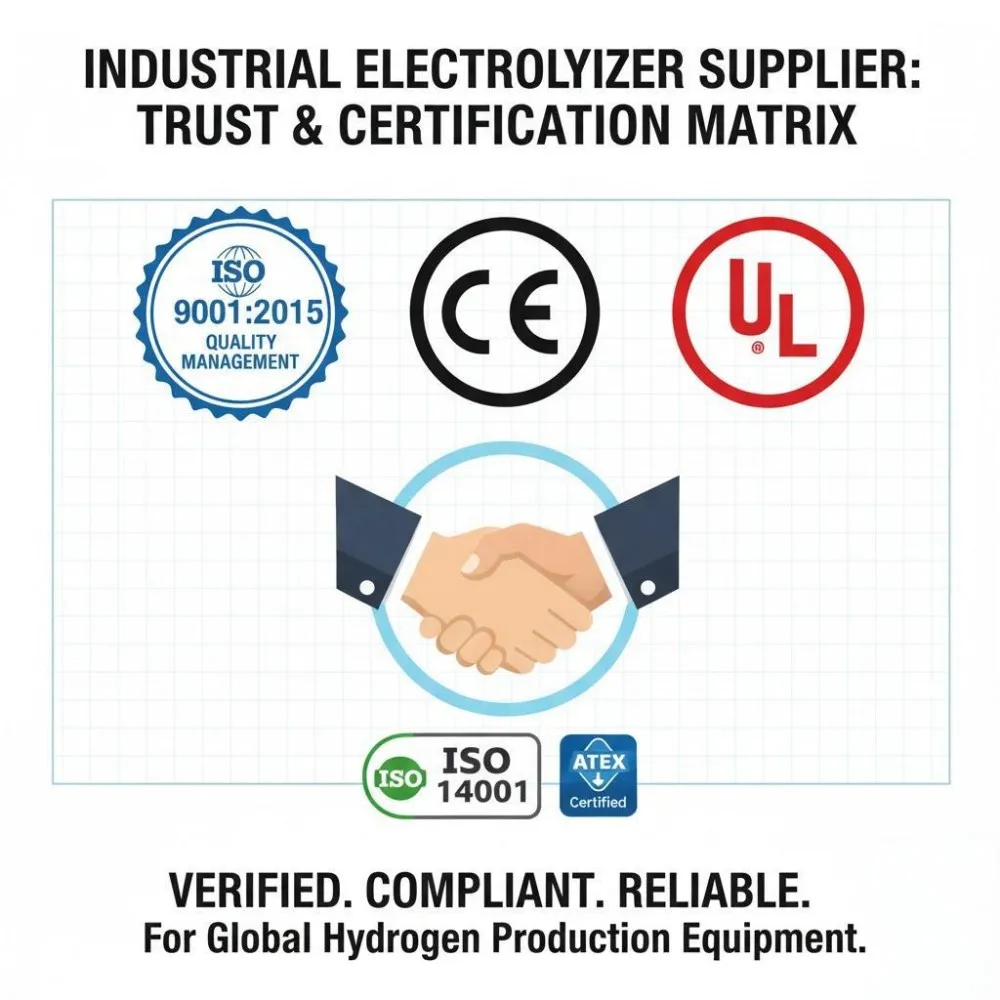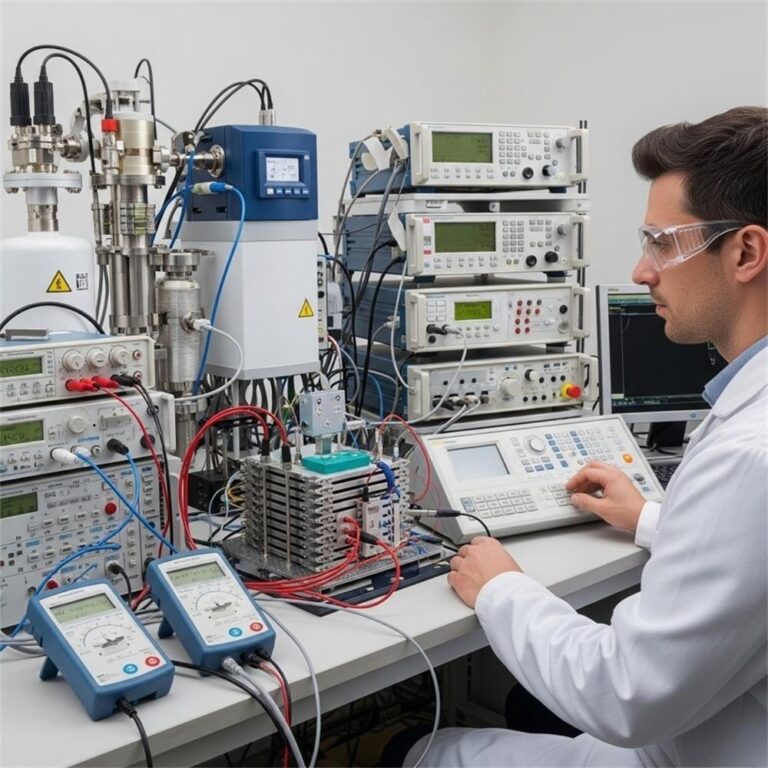Explore the environmental advantages of PEM (Proton Exchange Membrane) technology for green hydrogen generation. Learn about system design, integration with renewables, and real-world case studies.

I. Introduction: The Rise of Green Hydrogen
As climate change accelerates and fossil fuels deplete, the global shift toward clean energy is more urgent than ever. Among the front-runners in sustainable energy solutions is green hydrogen, a fuel produced through the electrolysis of water using renewable electricity—leaving behind zero emissions.
This clean-burning gas not only has the potential to decarbonize heavy industries and transportation but also to reshape the global energy landscape. At the core of this revolution is PEM technology, or Proton Exchange Membrane electrolysis, a promising method to efficiently generate green hydrogen.
Let’s dive deep into how this advanced technology works and its numerous environmental advantages.
II. Understanding PEM Technology for Green Hydrogen Generation
A. What is PEM (Proton Exchange Membrane) Electrolysis?
PEM electrolysis is a method that uses a solid polymer electrolyte to conduct protons from the anode to the cathode, while separating oxygen and hydrogen gases. Unlike older technologies, PEM operates at relatively low temperatures and offers high efficiency.
B. How Does a PEM Green Hydrogen Generator Work?
1. Water Electrolysis Process
In a PEM system, purified water is split into hydrogen and oxygen by an electric current. At the anode, water molecules release oxygen and protons. The protons travel through the membrane to the cathode, where they combine with electrons to form hydrogen gas.
2. Key Components:
- Membrane: Conducts protons while blocking gases.
- Electrodes: Facilitate the splitting of water.
- Catalyst Layers: Speed up the reactions.
- Water Management System: Ensures consistent hydration.
C. Advantages Over Other Electrolysis Methods
1. Higher Efficiency and Purity
PEM systems can produce hydrogen at 99.999% purity levels, ideal for applications requiring ultra-clean hydrogen.
2. Compact Design and Scalability
Their modular nature allows for scalability from small labs to industrial-scale operations.
3. Fast Response Times
PEM electrolyzers can quickly adjust to changing power inputs, making them perfect for integration with intermittent renewable sources like solar and wind.
III. Environmental Advantages of PEM Technology
A. Zero Carbon Emissions (When Powered by Renewables)
The most direct environmental benefit is the absence of CO₂ emissions during hydrogen production when using solar or wind energy.
B. Reduced Greenhouse Gas Footprint
Compared to steam methane reforming (SMR), which emits large amounts of CO₂, PEM electrolysis dramatically lowers greenhouse gas emissions.
C. Water Conservation
Though water is required, PEM systems are highly efficient, using significantly less water than many fossil fuel-based hydrogen production methods.
D. Lower Lifecycle Environmental Impact
From manufacturing to end-of-life, PEM systems generally have a smaller environmental footprint than alkaline electrolyzers due to fewer harmful chemicals and more recyclable materials.
IV. System Design Considerations for PEM Green Hydrogen Generators
A. Selecting the Right PEM Electrolyzer Stack
Choosing between small, medium, or large stacks depends on the application—mobility, industrial use, or energy storage.
B. Power Supply Optimization
To maximize efficiency, systems must match renewable power input with electrolyzer demands, possibly using smart grid technology or power electronics.
C. Water Purification and Management
Only highly purified water should be used to prevent membrane degradation and ensure long life.
D. Hydrogen Storage and Compression
Design must incorporate safe and efficient storage solutions—either in pressurized tanks or as compressed gas.
E. Safety Considerations
Integrated sensors, pressure relief valves, and automated shutdown systems are crucial to ensure safe operation.
V. Integration with Renewables for Sustainable Hydrogen Production
A. Pairing with Solar Power
PEM electrolyzers can ramp up quickly in sync with solar generation cycles, optimizing hydrogen production during peak daylight.
B. Utilizing Wind Energy
Wind turbines, with their variable output, align well with PEM’s dynamic response capabilities.
C. Hybrid Renewable Systems
Combining solar and wind ensures a more continuous power supply, ideal for round-the-clock hydrogen generation.
D. Grid Integration
Excess hydrogen can be stored and used to generate electricity when renewable generation is low, contributing to grid stability.
VI. Case Studies: Successful PEM Green Hydrogen Projects
A. H2Future (Austria)
A collaboration between Siemens and Verbund using a 6 MW PEM electrolyzer to produce green hydrogen for steel manufacturing.
B. REFHYNE (Germany)
Europe’s largest PEM electrolyzer plant (10 MW) that supplies green hydrogen to Shell’s refinery in Rheinland.
C. Fukushima Hydrogen Energy Research Field (Japan)
A project that uses 10 MW of solar power to generate green hydrogen, showcasing disaster recovery and sustainable energy co-benefits.
D. Lessons Learned
- Regular maintenance and water quality management are key.
- Integration with renewables requires careful system balancing.
VII. Policy Implications and Government Support for Green Hydrogen
A. Incentives and Subsidies
Governments worldwide are offering tax credits, grants, and feed-in tariffs to make green hydrogen economically viable.
B. Regulatory Standards
Establishing safety, purity, and emissions standards helps increase public trust and investor confidence.
C. Global Collaboration
Projects like the EU’s Hydrogen Strategy and Japan’s Basic Hydrogen Strategy aim to standardize and scale green hydrogen infrastructure.
VIII. Conclusion: The Future of PEM Technology in Green Hydrogen
As the world races toward net-zero emissions, PEM technology stands out as a clean, efficient, and scalable method for producing green hydrogen.
Its integration with renewable energy sources amplifies environmental benefits, while innovations and supportive policies continue to drive adoption.
From industrial applications to clean mobility, PEM technology green hydrogen generator systems offer a transformative solution in our quest for sustainable energy.
Frequently Asked Questions (FAQs)
1. What makes PEM technology ideal for green hydrogen production?
Its high efficiency, purity, fast response time, and compatibility with renewables make it ideal for producing emission-free hydrogen.
2. How does PEM differ from alkaline electrolysis?
PEM operates at lower temperatures, uses solid electrolytes, and offers faster start-up and better purity compared to alkaline systems.
3. Can PEM electrolyzers work with any renewable source?
Yes. They can be powered by solar, wind, hydroelectric, or hybrid systems, making them highly flexible.
4. Is green hydrogen really emission-free?
When powered entirely by renewable electricity, green hydrogen production emits zero carbon dioxide.
5. What industries can benefit from PEM green hydrogen?
Sectors like steelmaking, transport (especially heavy-duty vehicles), energy storage, and chemicals benefit the most.
6. Are there cost barriers to PEM technology adoption?
Currently, high capital costs are a barrier, but falling prices of renewables and policy incentives are making PEM more affordable.







